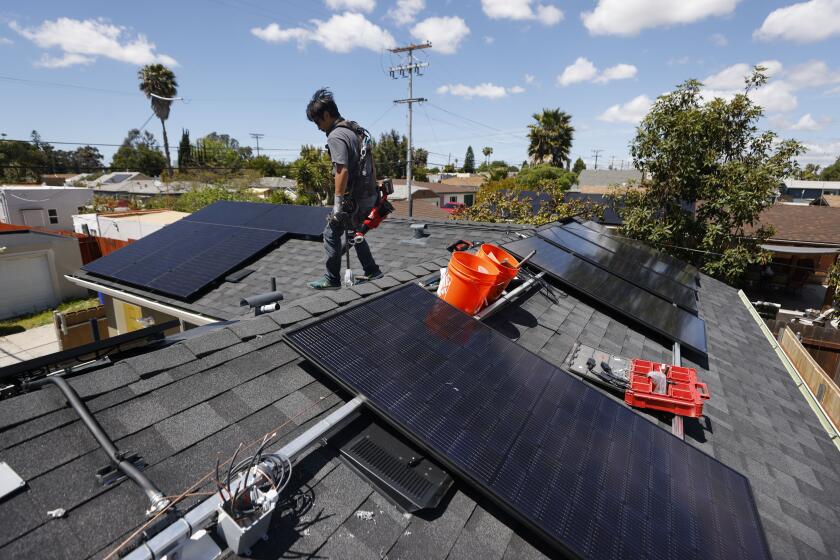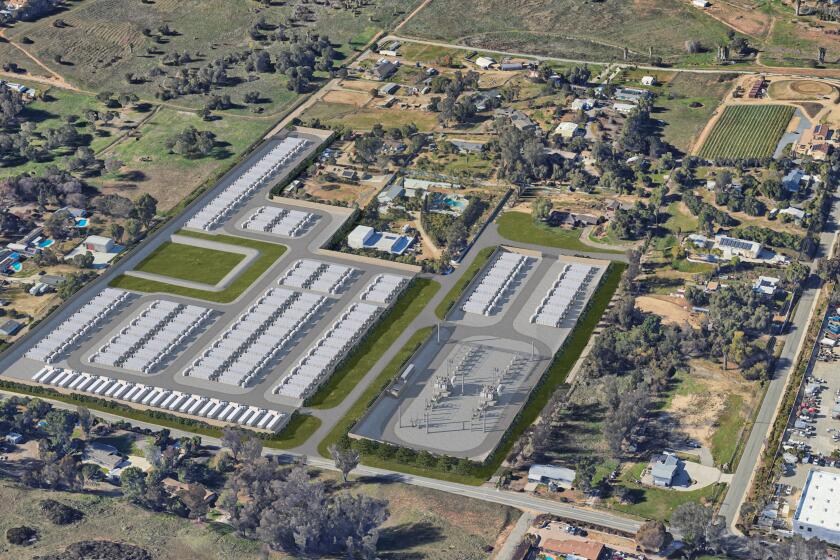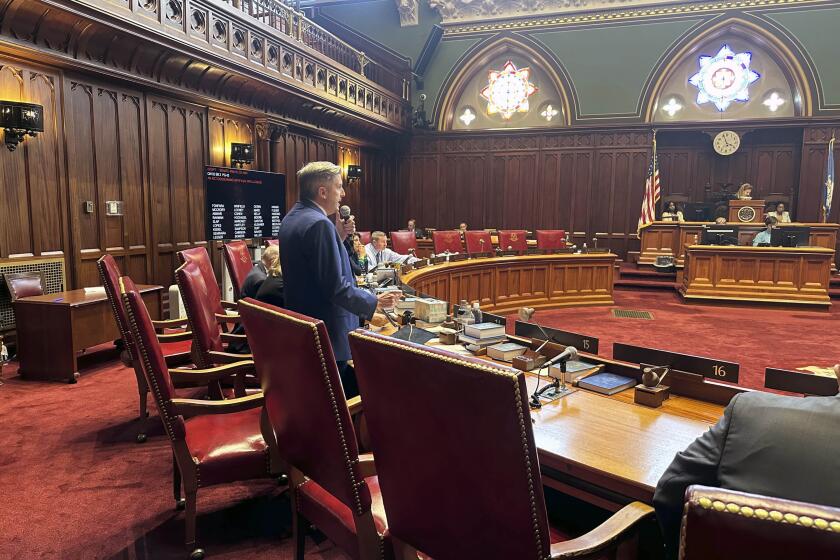San Diego ranks No. 2 in nation for solar
Solar energy has found an accommodating place on rooftops across the county and according to a report that compiled numbers from major metropolitan areas, San Diego finished second in the nation for solar capacity — in the total amount installed as well as on a per-person basis.
“San Diego is a sunny place and it’s sort of natural for people to think, let’s tap into the sun and be able to use the energy that’s heating up our roofs and turn it into electricity,” said Dan Jacobson, director of Environment California, which released the “Shining Cities 2020” report.
For the record:
3:02 p.m. June 2, 2020This story has been updated to correct the total megawatts of installed solar PV in Los Angeles. It is 483.8 megawatts.
San Diego amassed 420.4 megawatts of total installed solar photovoltaic (PV), the technology that converts sunlight into direct current electricity by using semiconductors. Only Los Angeles racked up more solar PV, with 483.8 megawatts.
On a per capita basis, that breaks down to 294.8 watts for greater San Diego. Honolulu came in first place by a wide margin, with 840.9 watts per person.
“It’s expensive to ship things, including fossil fuels, to Hawaii,” Jacobson said. “So the opportunity for people to generate their own electricity at their home, use it exactly where they live, makes a lot of financial sense.”
San Diego has always finished near or at the top of the annual Shining Cities report, which first came out in 2013. At that time, the survey counted just eight cities with 50 watts or more of solar PV capacity per capita. This year, 26 surpassed that threshold.
Since 2016, San Diego’s per capita solar number has grown 116.8 percent in the Shining Cities study.
There still appears to be room to grow.
The report estimated the amount of rooftop PV potential on small buildings and reckoned that San Diego has 2,218.8 megawatts that can be harvested. At more than 5,400 megawatts, Los Angeles had the most, followed by Houston with more than 4,600 megawatts.
Six cities in California finished in the overall Top 25 but a growing number of metropolitan areas outside the Golden State took big leaps. Albuquerque, New Mexico, moved up seven spaces to No. 3 in per capita solar, San Antonio improved by six notches to finish No. 6 and Wilmington, Delaware, jumped nine places to No. 18.
Environment California lobbies the Legislature in Sacramento and the report included a host of policy recommendations. On the federal level, the group wants to maintain the solar investment tax credit. The credit this year dropped from 30 percent to 26 percent. It falls to 22 percent in 2021 and is scheduled to be eliminated for residential customers in 2022.
If solar is growing so quickly, is the federal tax credit still needed?
Putting in solar “is an upfront cost that people have to make with their own money,” Jacobson said, “and being able to recoup some of that money in their federal taxes is a good way to get more people to install solar on their roofs.”
Solar installations are a key part of the city of San Diego’s climate action plan that aims to achieve 100 percent renewable energy use citywide by 2035.
According to the plan’s most recent annual report, the city has seen a 4.9 percent increase in job growth in the renewable energy sector since 2010.
“Now, as we’re grappling with a pandemic that has had a devastating impact across the globe, it is more crucial than ever that climate action also drives our economy by creating jobs for the future, reducing energy costs for families and businesses, and building a more sustainable future for all,” San Diego Mayor Kevin Faulconer said in a statement.
Per capita solar PV by city
(in watts DC)
1. Honolulu 840.9
2. San Diego 294.8
3. Albuquerque 273.2
4. San Jose 217.1
5. Burlington, VT 183.8
6. San Antonio 166.1
7. Las Vegas 164.1
8. Phoenix 164.1
9. Riverside 154.2
10. Denver 145.9
Source: Environment California/Frontier Group
Get U-T Business in your inbox on Mondays
Get ready for your week with the week’s top business stories from San Diego and California, in your inbox Monday mornings.
You may occasionally receive promotional content from the San Diego Union-Tribune.











